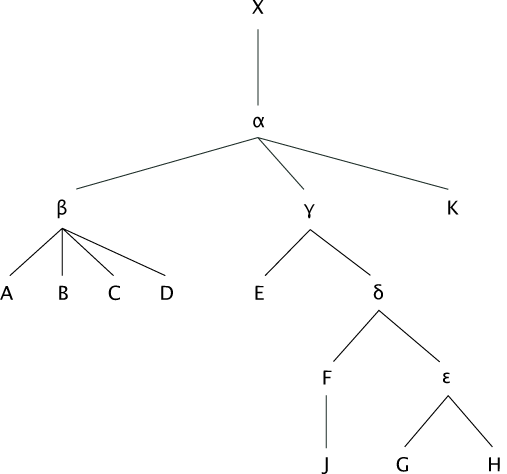[ˈɑːkɪtaɪp]
The word is derived from the classical Greek compound ἀρχέτυπον 'archetype, pattern, model, exemplar' which was often opposed to ἀπόγραφον 'copy' (cf. apograph). The compound itself consists of ἀρχή 'beginning' and τύπος 'the effect of a blow or of pressure' and thus 'impression, seal, engraving etc.'. Renaissance scholarship (written in Latin) tends to use the word in the classical Latin sense as 'autograph' (Irigoin 1977); this may cause confusion as the scholarly modern meaning (below) is rather different.
An archetype is a reconstruction of the (or: one of the) original text state(s) as far as the surviving witnesses can attest the original state of the text. Since the original has very rarely survived from classical or mediaeval times and since a large part of the earliest manuscripts of any work is normally lost, it is hardly ever possible to reconstruct the text of the original. The archetype is thus only an approximation to the original text, getting as far back in the reconstruction as the extant witnesses allow, and its text is just as good as the preserved manuscripts allows it to be. In some cases, however the archetype may be extant. For example, Giorgio Pasquali speaks of the “archetipo conservato delle Metamorfosi di Apuleio” (1934, 33).
In a stemma, the archetype is placed immediately below the original, and, especially in classical philology, it is often denoted by Greek letters. The illustration shows the (possibly long and complex) path between the original (X) and the archetype (α). It should be noted that for some works, more than one version of the original may be assumed (e.g. one reworked by the author), and that for similar reasons more than one (state of the) archetype may exist. Editors may correct evident errors in their reconstructed archetypal text and use philological judgement to try to approach the original text further (cf. emendatio).
In certain traditions (especially very contaminated or fragmentary ones) it may be impossible to arrive at an archetype. In some cases there may be more than one archetype (e.g. when a text is assembled from various sources). See also hyparchetype.
The term most recent common ancestor (MRCA) in evolutionary biology corresponds to the 'archetype' in textual criticism. The archetype in a stemma corresponds to the root in a phylogenetic tree.
Fig. 1. A re-drawn and simplified version of the stemma published in Maas (1960, 7).
In fig. 1, X is the original, α the archetype, while β and γ are hyparchetypes.
References
– Berschin, Walter. 2007. “Lachmann und der Archetyp.” In Theoretical Approaches to the Transmission and Edition of Oriental Manuscripts, edited by Judith Pfeiffer and Manfred Kropp, 251–257. Beirut: Orient-Institut Beirut.
– Irigoin, Jean. 1977. “Quelques réflexions sur le concept d’archétype.” Revue d’Histoire des Textes 7: 235–245. – Reprinted in Jean Irigoin. 2003. La tradition des textes grecs: Pour une critique historique, 37–53. L’âne d’or, vol. 19. Paris: Les Belles Lettres.
– Maas, Paul. 1960. Textkritik. 4th ed. Leipzig: Teubner. – 1st ed. 1927.
– Pasquali, Giorgio. 1934. Storia della tradizione e critica del testo. Firenze: Le Monnier. – 2nd ed. Firenze: Le Monnier, 1952.
– Reeve, Michael D. 1985 [1986]. “Archetypes.” Sileno: Rivista di studi classici e cristiani 11 (1–4): 193–201. – Reprinted in Michael D. Reeve. 2011. Manuscripts and Methods: Essays on Editing and Transmission, 107–117. Roma: Edizioni di storia e letteratura.
– ———. 2007. “Reconstructing Archetypes: A New Proposal and an Old Fallacy.” In Hesperos: Studies in Ancient Greek Poetry Presented to M.L. West, edited by P.J. Finglass et al., 326–340. Oxford: Oxford University Press. – Reprinted in Michael D. Reeve. 2011. Manuscripts and Methods: Essays on Editing and Transmission, 119–131. Roma: Edizioni di storia e letteratura.
– Trovato, Paolo. 2005. “Archetipo, stemma codicum e albero reale.” Filologia italiana 2: 9–18.
In other languages
DE: Archetyp
FR: archétype
IT: archetipo
LAT: codex archetypus
OH and PR (etymology)

